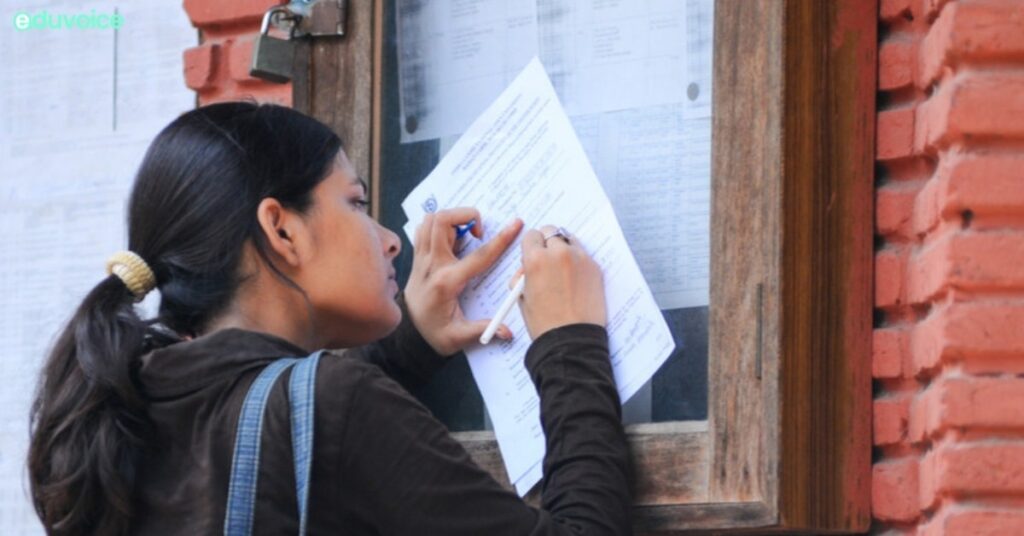Aiming for a seamless transition from school to higher education while enhancing employability, the union education ministry is now in the last phase of finalising the National Credit Framework (NCrF).
Drafted by a team led by the National Council for Vocational Education and Training (NCVET) in consultation with universities, Indian Institutes of Technology (IIT), and Indian Institutes of Management (IIM), the NCrF has been placed in the public domain for comment.
The “mother framework document” brings higher, school, and skill education under a single umbrella. The document recognises and assigns credits to all dimensions of learning – formal and informal, academic and co-curricular, in internships and projects. These credit points can be used to determine the eligibility for taking admission to various programs at multiple levels allowing vertical and lateral mobility across academic and vocational education and.
The proposed framework provides a way to measure and compare learning achievements typically based on duration and competencies gained at various levels. The levels, till now restricted to higher education, now include primary school students beginning from Class 5, up to PhD level.
Launching the public consultation of the draft on October 19, education minister Dharmendra Pradhan said that the NCrF would work as “an umbrella framework for skilling, re-skilling, up-skilling, accreditation and evaluation” encompassing educational and skilling institutions and workforce.
It will also determine evaluation policies permitted by regulators like the University Grants Commission (UGC), All India Council for Technical Education (AICTE), National Council for Vocational Education and Training (NCVET), National Institute of Open Schooling (NIOS), Central Board of Secondary Education (CBSE), National Council for Educational Research and Training (NCERT) and Directorate General of Training (DGT). Also, autonomous institutions, including universities, the Institute of National Importance, state school boards, and technical education boards.
Earning credits under NCrF
For the first time, the ministry has brought regular school education under a uniform credit system. The NCrF credit levels for school education are up to level 4 where Class 5 is level 1. The levels rise in the following pattern:
| Class | Credit Level |
| Class 5 | 1 |
| Class 8 | 2 |
| Class 10 | 3 |
| Class 12 | 4 |
Thereafter, credit levels rise by 0.5 for every year of learning. Similarly, the “assessment band” in higher education starts from level 4.5 which is the first year of an undergraduate programme or a diploma. The credit level increases by 0.5 every year in higher education and goes up to the highest credit levels 7 and 8. A student reaches the first upon enrolling in a postgraduate course and the second, in a PhD programme.
National Credit Framework for schools
Each subject is assigned 240 hours for self-study at the school level. At the secondary and senior-secondary levels (Classes 9-12), a total of five subjects are required leading to a total of 1,200 hours and 40 credits in one year. From preschool to Class 5, the learning hours range from 800 to 1,000 hours.
School-level credit system
| Grade Level | Hours of study per year | Credits per year | NCrF credit level | Credit points earned |
| Class 5 | 1,000 | 33 | 1.0 | 33 |
| Class 6 | 1,200 | 40 | 1.33 | 53 |
| Class 7 | 1,200 | 40 | 1.67 | 67 |
| Class 8 | 1,200 | 40 | 2.0 | 80 |
| Class 9 | 1,200 | 40 | 2.5 | 100 |
| Class 10 | 1,200 | 40 | 3.0 | 120 |
| Class 11 | 1,200 | 40 | 3.5 | 140 |
| Class 12 | 1,200 | 40 | 4.0 | 160 |
NCrF for higher education
Higher education and vocational courses have also been assigned 1,200 notional learning hours in an academic year. For every 30 hours of learning, one credit will be awarded to a student. Therefore, a student must earn 40 credits every year.
The total learning hours will be “creditised” based on class assessments, laboratory work, innovation labs, class projects, assignments, or tutorials. Beyond classroom learning, sports and games, yoga, physical activities, performing arts, handicrafts, and bagless days will be part of the evaluation framework.
Beyond the fixed credit requirements of a course, students can also earn credits through training and skilling, project work, field visits, on-the-job training, internship, or any relevant experience and professional skills acquired. Even participation in hackathons will count toward the credits earned.
Assignment of credits has been enabled for online, digital, and blended learning in vocational education and skilling to expand the open and distance learning options and to promote extensive use of technology.
Higher education credit framework
| Qualification | Total learning hours per year | Total credits per year | NCrF credit level | Credit points |
| Undergraduate Certificate (first 2 semesters) | 1,200 | 40 | 4.5 | 180 |
| Undergraduate Diploma (first 4 semesters) | 1,200 | 40 | 5 | 200 |
| Bachelor’s degree (6 semesters) | 1,200 | 40 | 5.5 | 220 |
| Honours/ research/engineering(8 semesters) | 1,200 | 40 | 6 | 240 |
| PG Diploma (2 semesters) | 1,200 | 40 | 6.5 | 260 |
| Master’s degree (4 semesters) | 1,200 | 40 | 7 | 280 |
| PhD | 1,200 | 40 | 8 | 320 |
The document also proposes keeping a “basket of courses in addition to flagship programmes” in line with industry requirements. Depending on their preference, a student may earn credits beyond the ceiling of 40 credits. This provision will enable the student to undertake the UGC-approved dual degree programmes.
Credits for experiential learning
The National Education Policy 2020 emphasises on learning by doing and thus NCrF includes weightage for relevant experience and proficiency levels achieved by a learner. It includes performing arts, music, handicrafts, debate, essay writing, drama, sports, yoga, social work, internships, on-the-job training, field visits, and industry attachments by institutions.
The credits and their weightage, however, will be determined by the concerned regulator or school board. The programmes must also be aligned with the National Higher Education Qualification Framework (NHEQF), National School Education Qualifications Framework (NSEQF) – itself a new concept –and National Skill Qualification Framework (NSQF).
\For instance, as per NHEQF, a fresher with no prior experience must dedicate 150 to 210 hours of short term training or 600 hours of apprenticeship to earn 40 credits. Similarly, a Class 10 graduate who has no prior experience and has undergone 360 to 400 hours of short-term training and a year-long vocational training after Class 8 will be able to earn 100 credit points.
Multiple entry and exit and ABC
Enabling ease of mobility in and out of the educational system, the NCrF includes provisions for multiple entry and exit at any point. However, guidelines for the actual implementation of this policy in general and vocational education have been left to the concerned regulators.
Apart from higher education, NCrF also recognises multiple entry and exit at school level. For instance, a Class 5 student with 200 credit points who has completed a bridge course can be eligible to appear for the Class 8 examination. If the student clears the exam, they can resume schooling from Class 9.
The framework also envisages a well-developed Academic Bank of Credits (ABC) that will enable seamless mobility between or within degree-granting universities. The platform will include services like credit accumulation, credit transfers, credit redemption, and validation of accounts.
The education ministry has planned to open Aadhar-linked student registration on the ABC platform. “An Aadhaar-enabled student registration will take place. After student registration, an ABC account will be opened. The deposit of degrees and credits will take place in those accounts. There will be a knowledge locker through blockchain technology along the lines of DigiLocker,” said Pradhan at the launch event.
The ABC platform will maintain records of credits accumulated by students. In case a learner, for any reason, is unable to complete a programme and wishes to re-join, they can do so within a span of seven years, provided they possess require credit scores and fulfill other eligibility criteria.
Bringing informal learning into the fold, the NCrF also refers to learning gained through work experience and in non-formal and informal learning contexts subject to the assessment of their existing knowledge, skills, and competencies.
NCrF for gifted children
The framework also addresses the need to enable “educational acceleration for gifted children” by assessing students not based on learning hours but on learning outcomes.
This provision is essential for students “who move through the traditional curriculum at rates faster than normal pace” and are capable of skipping grades. For such students, the document proposes enabling special provisions like hackathons, and Olympiads including students who show exemplary performance in sports, fine arts, and other activities.
“However, such specialized assessment methods have to be very strict, objective, above board and adhere to high-standard so as to keep the credibility of the NCrF intact,” the document adds.
For More Such Articles, News Update, Events, and Many More Click Here






